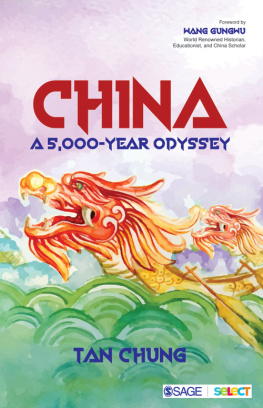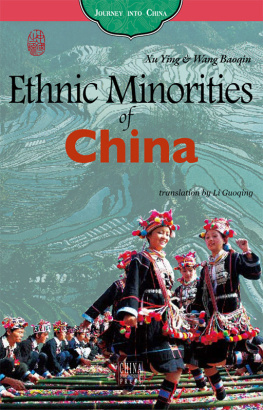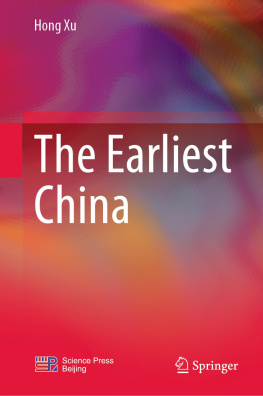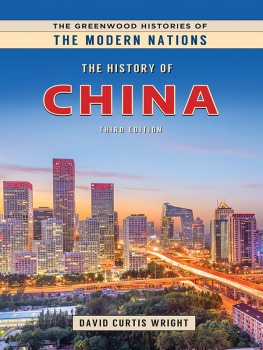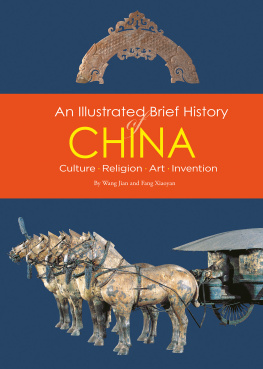SAGE was founded in 1965 by Sara Miller McCune to support the dissemination of usable knowledge by publishing innovative and high-quality research and teaching content. Today, we publish over 900 journals, including those of more than 400 learned societies, more than 800 new books per year, and a growing range of library products including archives, data, case studies, reports, and video. SAGE remains majority-owned by our founder, and after Saras lifetime will become owned by a charitable trust that secures our continued independence.
Los Angeles | London | New Delhi | Singapore | Washington DC | Melbourne
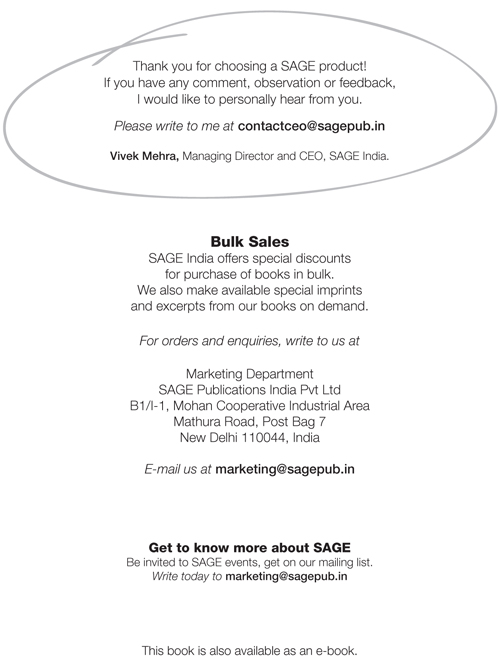

Copyright Tan Chung, 2018
Not for sale in Mainland China
All rights reserved. No part of this book may be reproduced or utilized in any form or by any means, electronic or mechanical, including photocopying, recording, or by any information storage or retrieval system, without permission in writing from the publisher.
First published in 2017 by New World Press, Beijing
This edition published in 2018 by

SAGE Publications India Pvt Ltd
B1/I-1 Mohan Cooperative Industrial Area
Mathura Road, New Delhi 110 044, India
www.sagepub.in
SAGE Publications Inc
2455 Teller Road
Thousand Oaks, California 91320, USA
SAGE Publications Ltd
1 Olivers Yard, 55 City Road
London EC1Y 1SP, United Kingdom
SAGE Publications Asia-Pacific Pte Ltd
3 Church Street
#10-04 Samsung Hub
Singapore 049483
Published by Vivek Mehra for SAGE Publications India Pvt Ltd, typeset in 11/14 pts Bembo Std by Fidus Design Pvt. Ltd., Chandigarh.
Library of Congress Cataloging-in-Publication Data
Name: Tan, Chung.
Title: China : a 5,000-year odyssey / Tan Chung.
Description: New Delhi: SAGE Publications; Thousand Oaks, California: SAGE Publications India, 2018.
Identifiers: LCCN 2018011528| ISBN 9789352807246 (print pb) | ISBN 9789352807253 (e pub 2.0) | ISBN 9789352807260 (e book)
Subjects: LCSH: ChinaCivilization.
Classification: LCC DS721 .T263 2018 | DDC 951dc23
LC record available at https://lccn.loc.gov/2018011528
ISBN: 978-93-528-0725-3 (ePub)
SAGE Team: Manisha Mathews, Alekha Chandra Jena, Madhurima Thapa, and Ritu Chopra
The figures in this book are provided by CNSPHOTO, Li Chenxi, Tan Chung, and Zhao Yue.
CONTENTS
The rise of India and China over the past two decades has led to numerous books and articles about the future security architecture of Asia. When it has become clear that the worlds economic growth centers have shifted from the North Atlantic to the Indo-Pacific, it is time to retell the story of the regions interstate and cultural relations over the past millennia. Tan Chungs new book sets out to do that for what he calls Chinas odyssey, for 5,000 years of it. What is exceptional about the book is that a Chinese scholar who deeply loves and understands India is offering a new perspective on Chinas history.
I first met Tan Chung half a century ago. When I realized that he was the son of Tan Yun-shan, someone my father greatly admired, the story of what the young Tan Chung was doing in India came doubly alive. My father told me that he was teaching in 1927 at the Chinese High School in Singapore when he heard that Tan Yun-shan had met Rabindranath Tagore, and that he was greatly awed to learn that Tagore was so impressed that he invited Tan Yun-shan to teach the Chinese classics at Visva Bharati in Shantiniketan. My fathers account of Tagores pioneering effort to build an Indian center of excellence that was not dependent on the British view of history and culture has stayed in my imagination ever since.
The Tan father-and-son story is an extraordinary one. Born in Malaya in 1929 and educated in China, Tan Chung joined his father in 1955 and, like his father, was soon immersed in the world of Indian civilization. Teaching Chinese to generations of Indian students and drawn to the genius of India, he developed a portrait of Chinese history that could only have come from looking north across the Himalayas and down the river systems of the Huang He and the Yangzte. The result was, as he suggests, it enabled him to conceive of two parallel civilization-states that defied the challenge of the nation-state systems coming out of the Mediterranean political cultures.
Tan Chung first threw down the gauntlet in 1973 against the contemporary dominance of the nation-state framework soon after he completed his PhD from the University of Delhi in 1973 and submitted his paper On Sinocentrism: A Critique, followed by The BritainChinaIndia Trade Triangle the next year. The full context was then set out when his book China and the Brave New World was published in 1978. Since then he has refined and developed the critical points that he had made, but he remains consistent in challenging the Eurocentric narratives of postcolonial historiography even as these are being revised.
I also commend the added dimensions that have come from Tan Chungs growing interest over the past two decades in what Tagore and his father had earlier emphasizedthe fruitful ancient civilizational ties between India and China. There had been a deep and rich reservoir of connectedness that drew from many springs, and he has been exploring Chinas store of documentary and archeological materials to depict the many layers of that story. Thus, what he calls an odyssey envisages China and India rising again in a different world from that which Tagore and Tan Yun-shan had known. Tan Chung offers a new take on Chinas history from a perspective enriched by his own half-century studying, teaching, and writing practices in India.
He does not claim to know how much the history that future Indian historians may come to write will share in common with that of China or whether those historians will proceed along an altogether different path possibly closer to that of the modern West. Also, he is right in expecting that there would always be people from both countries who would share Tagores lofty hopes. Tan Chung has encapsulated it in Tagores own words and has quoted him with the utmost respect:
We must learn to defend our humanity against the insolence of the strong, only taking care that we do not imitate their ways and, by turning ourselves brutal, destroy those very values which alone make our humanity worth defending.
Wang Gungwu
National University of Singapore
Dear readers, I am telling you a story of my China. I say my China because I am the scion of Chinese parents and I grew up in China, spending a quarter of a century of my childhood and youth there, and I have Chineseness (now fashionably described as Chinese characteristics) in my DNA. According to me, anything that takes place in China is logical, resonating to some historical or current circumstance, as well as some internal or external factors. I dont see any China puzzle in any scenario of China vis--vis international development. I also find observations that pitch the admirable China against the abominable Chinese, or the amicable Chinese against the assertive China to be irrational. In my story of my China, there is no cause for fear or worry, or dismay.
I have been living outside China for more than six decades, which was a whole lifetime for the ancients. I have spent these decades almost single-mindedly thinking about China, reading about China, watching Chinas developments, and pondering upon its problems. I have also appointed myself as a spokesman of my China to whosoever wanted to know China or share my views on China. It is a special situation for me to see my China from a distance and see at close quarters how the world sees my China. This situation so often brings anguish and anxiety to me as I see so many images of my China, which are so different from the true picture in my mind. Therefore, it motivates me to share my picture of my China with the world.
Next page
